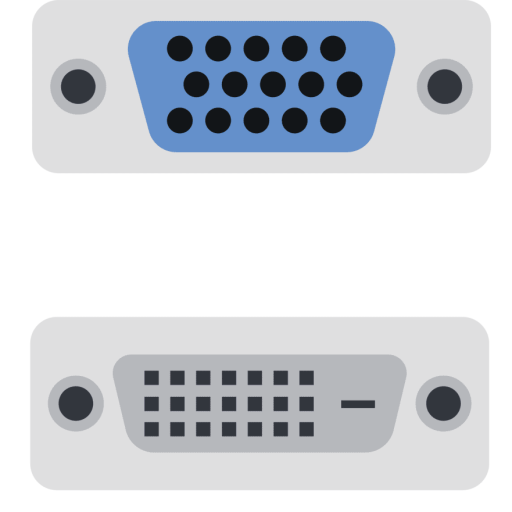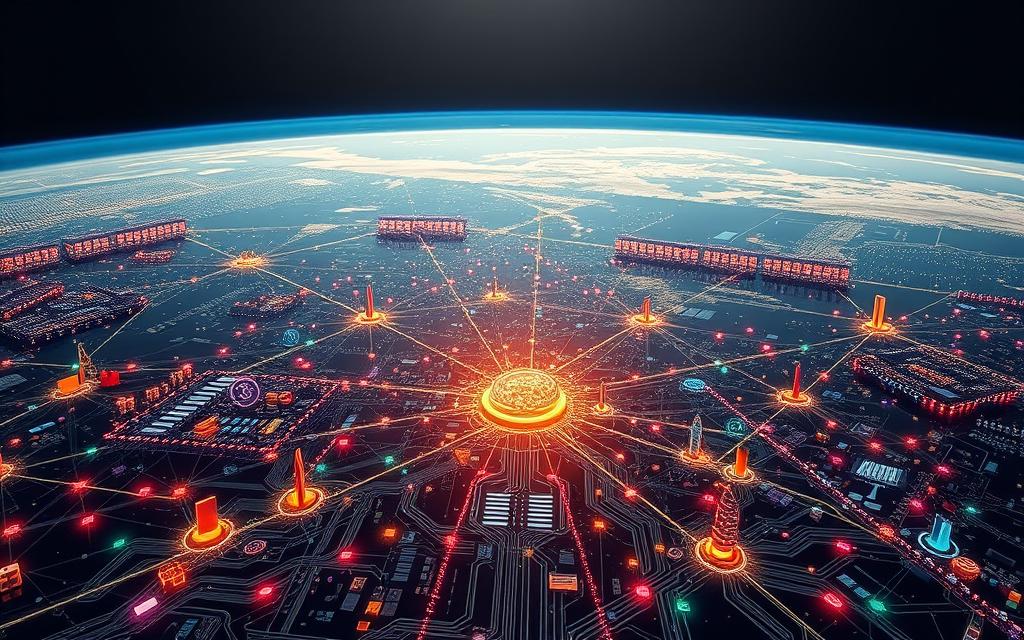The Internet Explained: A Computer Science Perspective
Modern digital communication relies on a vast network of linked systems. This infrastructure enables instant data exchange across continents, powering everything from emails to streaming services.
At its core, this global system connects billions of devices through standardized protocols. TCP/IP serves as the universal language allowing computers and smart devices to communicate seamlessly.
ICANN oversees critical coordination functions, managing IP addresses that keep the network organized. Since emerging from military research projects, this technology has transformed into an essential public utility.
Over 4.5 billion users worldwide now access digital services built atop this foundation. While often confused with the web, the underlying infrastructure remains distinct from applications running on it.
What Is the Internet in Computer Science?
Global connectivity thrives on a meticulously designed architecture of nodes and protocols. This system enables seamless communication between devices, from smartphones to enterprise servers, using standardized rules like TCP/IP.
Physical Backbone of Digital Communication
Underpinning the network are submarine cables, fiber optics, and wireless towers. Nearly 97% of international data flows through undersea cables, while IXPs (Internet Exchange Points) optimize traffic routing.
How Devices Collaborate
A client-server model drives most online activity. For example, a Chrome browser requests data from AWS servers, which routers like Cisco systems direct using packet-switching. Key components include:
- Modems for signal conversion
- DNS root servers for address resolution
- Switches to manage local traffic
| Feature | IPv4 | IPv6 |
|---|---|---|
| Address Length | 32-bit | 128-bit |
| Total Addresses | 4.3 billion | 340 undecillion |
| Adoption | Legacy systems | Growing (IoT demand) |
Born from ARPANET’s 4-node experiment in 1969, today’s infrastructure scales to support 4.5 billion users. LANs handle office traffic, while ISPs rely on WANs for broader coverage.
How the Internet Works: Protocols and Data Transmission
Behind every online interaction lies a complex system of protocols. These rules govern how data moves across networks, ensuring devices communicate accurately and efficiently.
TCP/IP: The Backbone of Internet Communication
TCP/IP operates like a digital postal service. It breaks information into packets, labels them with source and destination addresses, and reassembles them upon arrival. Key features include:
- Three-way handshake: Establishes a connection (SYN, SYN-ACK, ACK)
- Error correction: Retransmits lost packets
- Flow control: Prevents network congestion
“TCP’s reliability makes it ideal for emails and file transfers, while UDP’s speed suits video calls.”
Packet Switching: Efficient Data Delivery
Unlike traditional phone lines, packets take dynamic routes. Fiber optics and satellites ferry them based on real-time traffic. Tools like Wireshark reveal:
- Header details (IP addresses, ports)
- Payload size (limited by MTU)
- Routing paths (cloud load balancers optimize these)
Role of Routers and Servers
Routers act as traffic directors, using tables to forward packets toward their destination. Meanwhile, servers process requests—like fetching a webpage after DNS resolution. Modern architectures (e.g., AWS Global Accelerator) enhance speed through:
- Geographically distributed nodes
- Anycast routing
- Redundant connections
This layered system—from physical cables to TCP/IP—powers the instant, global exchange we rely on daily.
The Evolution of the Internet: From ARPANET to Modern-Day
ARPANET’s first transmission launched a technological revolution. What began as a four-node computer network now connects billions globally. This journey transformed military research into public infrastructure.
Early Development and Key Milestones
DARPA-funded researchers achieved the impossible in 1969. UCLA and Stanford computers exchanged “LOGIN” – crashing after two letters. Despite glitches, packet-switching proved viable.
The 1970s introduced foundational technologies:
- FTP for file transfers (1971)
- Email protocols (1973)
- TCP/IP standardization (1982)
By 1983, ARPANET adopted TCP/IP, creating a universal language. This allowed disparate networks to interconnect, forming the modern computer network framework.
The Rise of the World Wide Web
Tim Berners-Lee revolutionized access in 1989. His web servers and browser on a NeXT computer created the first webpage. Unlike Gopher’s menus, HTTP enabled hyperlinked documents.
Key development phases:
- Mosaic browser (1993) popularized graphics
- Netscape’s SSL (1994) enabled e-commerce
- Google’s PageRank (1998) organized content
“Web adoption grew 5,000% between 1991-1997. What took radio 38 years to reach 50M users, the web achieved in four.”
Smartphones reshaped the digital world post-2007. iOS and Android turned mobile devices into primary access points. Today’s web servers handle 130+ million active sites globally.
Emerging technologies like 6G and quantum networking promise faster speeds. Akamai’s CDN model evolves to support IoT expansion, continuing ARPANET’s legacy of innovation.
Internet Infrastructure: Connecting the World
Beneath every click and stream lies a sprawling physical framework. This hidden lattice of cables, satellites, and wireless signals enables billions to access internet services seamlessly. From urban centers to remote villages, devices interconnect through layered network architectures.
Physical Components: Cables, Fiber Optics, and Wireless
Google’s Curie submarine cable stretches 6,500 miles, linking Los Angeles to Chile. Such undersea routes carry 99% of intercontinental data. Above ground, fiber optics dominate with two key types:
- Single-mode: Long-distance (100+ km), laser-powered, minimal signal loss
- Multi-mode: Shorter ranges (≤2 km), LED-based, cost-effective for LANs
Wireless tech bridges gaps where cables can’t reach. Starlink’s LEO satellites achieve 20–40ms latency, while 5G mmWave struggles with obstructions but delivers 1Gbps speeds. Contrasting standards:
| Technology | Speed | Best Use Case |
|---|---|---|
| Cat6 Ethernet | 10 Gbps | Office area network backbones |
| 802.11ax (Wi-Fi 6) | 9.6 Gbps | High-density urban zones |
Types of Networks: LAN, WAN, and MAN
Local area network (LAN) designs connect devices within buildings. Modern offices use SD-WAN to prioritize cloud traffic, cutting costs by 30% versus traditional WANs. Metropolitan area network (MAN) implementations power smart cities:
- Barcelona’s MAN optimizes traffic lights and waste management
- Singapore’s grid uses MAN for real-time energy monitoring
Rural access internet gaps persist despite FTTH (Fiber-to-the-Home) advances. Challenges include terrain and ROI timelines. Meanwhile, IIoT security risks escalate as factories adopt connected sensors without proper encryption layers.
“SD-WAN adoption grew 75% in 2023, driven by hybrid work demands.”
Explore how these systems integrate in network infrastructure designs, from OSI layers to DNS routing.
Key Internet Services and Applications
From instant messaging to global marketplaces, essential tools shape online experiences. These services leverage advanced protocols to deliver seamless functionality across devices. Whether checking emails or streaming media, users interact with sophisticated architectures hidden behind simple interfaces.
Communication Tools: Email, VoIP, and Video Conferencing
SMTP and IMAP protocols power email delivery like a digital postal system. Servers route messages through multiple checkpoints before reaching the recipient’s browser. Modern solutions like Gmail process 1.5 billion messages daily.
Real-time communication relies on WebRTC technology. Zoom’s SVC (Scalable Video Coding) adapts stream quality dynamically based on:
- Network bandwidth fluctuations
- Device processing capabilities
- Number of active participants
“WebRTC reduced video latency by 60% compared to legacy solutions, enabling natural conversations.”
E-Commerce and Online Transactions
Secure payment gateways require PCI DSS compliance for fraud prevention. TLS 1.3 now protects 82% of checkout pages, encrypting data in transit. Major platforms implement:
- Tokenization for card details
- 3D Secure authentication
- AI-powered anomaly detection
Amazon’s checkout process completes in under 90 seconds, demonstrating optimized transaction flows. Blockchain experiments aim to enhance DNS security for financial services.
Search Engines and Information Retrieval
Google’s PageRank algorithm evaluates over 200 ranking factors. It analyzes backlinks like academic citations, weighting authoritative sources higher. Modern applications combine:
| Technology | Purpose |
|---|---|
| Elasticsearch | Full-text search at scale |
| Solr | Faceted navigation |
CDNs cache popular content closer to users, reducing load times. Progressive Web Apps (PWAs) now deliver app-like experiences through browser access, outperforming native apps in retention metrics.
Conclusion
Global networks evolve rapidly, adding one user every three seconds. This expansion reshapes the digital world, connecting 75 billion IoT devices by 2025. Modern infrastructure must scale securely to support this growth.
Emerging technologies like AI optimize traffic routing dynamically. Machine learning predicts congestion points, while edge computing reduces latency. These advancements promise faster, more reliable connections.
Critical security gaps emerge as adoption increases. Post-quantum encryption becomes vital against sophisticated threats. Infrastructure investments must prioritize resilience alongside expansion.
Ongoing development requires skilled professionals. Educational initiatives should focus on networking fundamentals and emerging protocols. Explore certification programs to contribute to this transformative field.
FAQ
How does data travel across networks?
Data moves through packet switching, where information breaks into small packets. These travel via routers and servers, reassembling at the destination.
What role does TCP/IP play in communication?
A: TCP/IP governs how devices exchange data. It ensures reliable delivery by verifying packets and managing connections between networks.
Why is fiber optics important for infrastructure?
A: Fiber optics enable high-speed data transfer over long distances. They form the backbone of modern networking, supporting video, applications, and global communications.
How do search engines retrieve information?
A: Search engines use algorithms to scan web servers, indexing content for quick retrieval. They rank results based on relevance to user queries.
What distinguishes LAN from WAN?
A LAN covers a small area, like an office, while a WAN spans larger regions, such as the United States. Both rely on protocols to manage connections.
How does e-commerce leverage the web?
Online stores use web development and security protocols to process transactions. Secure browsers encrypt data, protecting users during purchases.



















